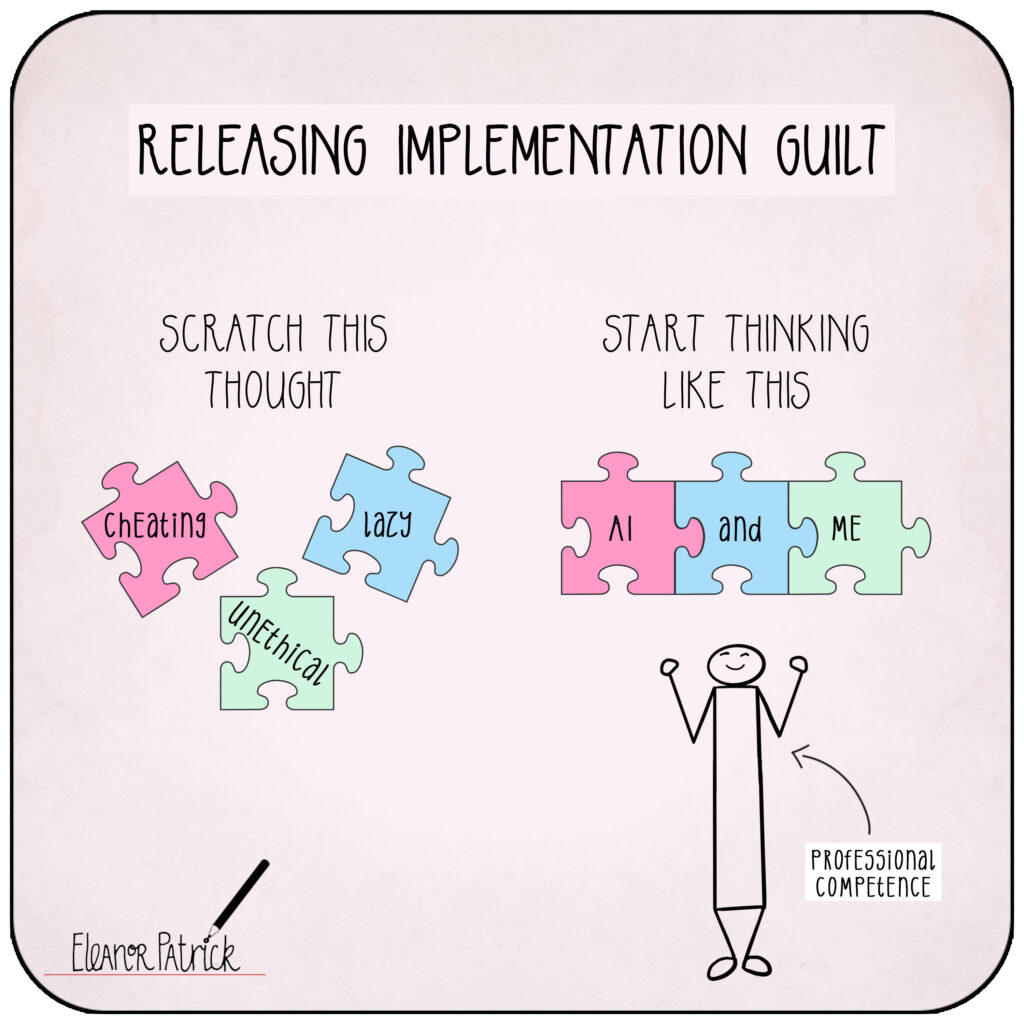
Day 08 — Releasing Implementation Guilt
The Core Concept
Many professionals carry guilt about using AI – feeling like they’re “cheating,” being lazy, or somehow diminishing their professional integrity.
This guilt often stems from outdated definitions of work ethic that equate effort with value.
In reality, using AI effectively to deliver better outcomes for clients and colleagues while reducing unnecessary stress is a professional virtue, not a shortcoming.
The goal is to release this guilt and embrace AI as a legitimate professional tool.
The Metaphor: The Efficiency Evolution
Consider how email replaced memos, calculators replaced slide rules, and word processors replaced typewriters.
Each transition involved some professionals feeling guilty about “taking shortcuts.”
But we now recognize that using these tools allowed people to focus on higher-level work rather than mechanical tasks.
Using AI is the next step in this professional evolution.
The architect who uses CAD software isn’t lazier than one who hand-draws blueprints. They’re using their time more strategically to focus on design and client needs rather than technical drafting.
The Professional Story
Tom, a lawyer, felt guilty every time he used AI to help draft contract language or research case precedents. He’d been trained to believe that hours spent equaled value delivered.
When he could complete research in 30 minutes instead of 3 hours, he felt like he was somehow cheating his clients.
This perspective changed when a client expressed appreciation for how quickly Tom had turned around a complex contract analysis. The client wasn’t paying for Tom’s hours. They were paying for his legal expertise and judgment applied to their specific situation.
The AI had handled the routine research and initial drafting, but Tom had provided the strategic thinking, risk assessment, and customization for the client’s unique needs.
He realized that using AI allowed him to deliver better service more efficiently, which benefited everyone.
His guilt transformed into professional pride in using every available tool to serve his clients effectively.
Try This Today
1. Identify Your Guilt Triggers: Notice any moments when you feel guilty or hesitant about using AI. What specific thoughts or beliefs create this resistance?
2. Reframe the Value Question: For one AI-assisted task today, focus on the outcome quality rather than the time or effort involved. Ask: “Did this deliver better results for the people I serve?”
3. Share Your Process: When appropriate, confidently explain to a colleague or client how you used AI to enhance your analysis or delivery. Practice framing it as professional competence, not corner-cutting.
Daily Integration Phrase:
“Using AI effectively is professional excellence, not professional shortcuts.”
 ContentFirst Marketing
ContentFirst Marketing